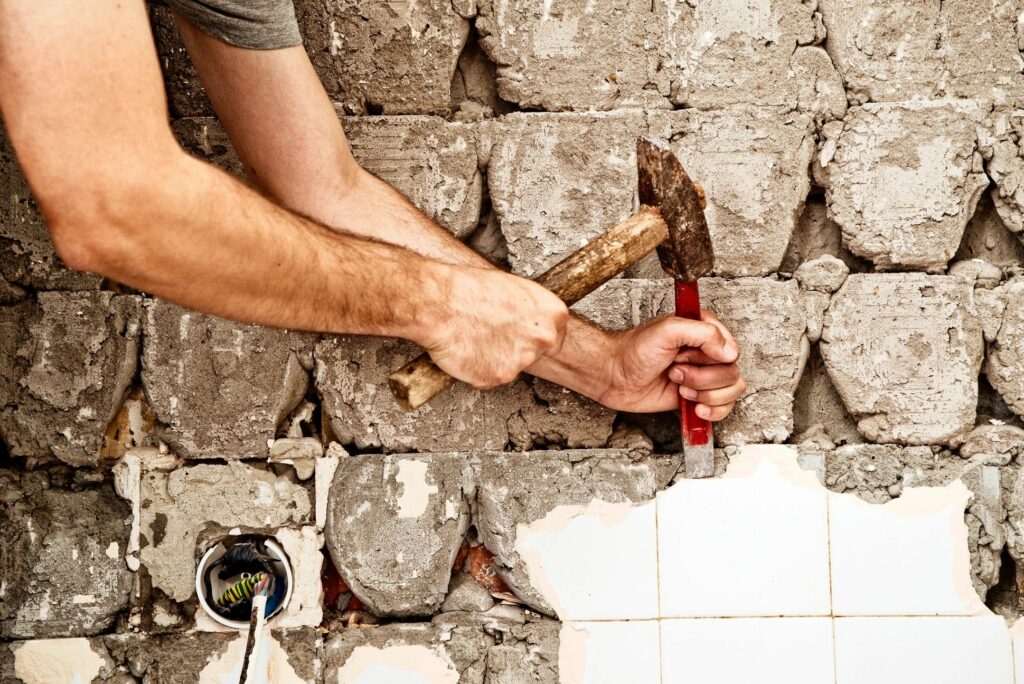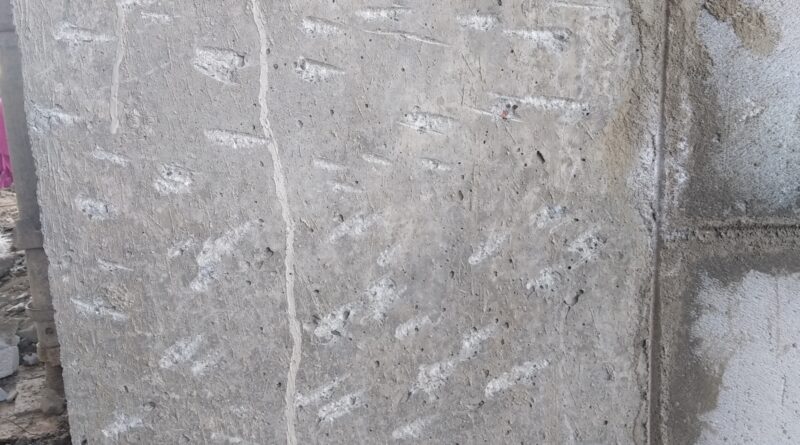What is Hacking in Building construction
-
Hacking refers striking of surfaces such as RCC walls, columns, beams, slabs etc., with a chisel to dent the surface in order to create a proper mechanical bond between structure and plaster
- And also the term Hacking is used at various instances during construction.

Hacking on column for Plaster work
- Cutting of a RCC member.
- A style of bricklaying in which the bottom edge is set in from the plane surface of the wall
- In a stone wall, the breaking of a single course into two or more courses, sometimes for effect but usually because of the scarcity of larger stones.
- Striking a surface with a special tool so as to roughen it to take plaster
Recommendation:
It is advisable to have 300 to 350 dents on an average per square meter and 28 to 32 per square foot
3 mm deep and 25 mm c/c

Also, It is recommended to have mechanical bonding (by hacking) always for plaster surfaces although you use chemical bonding materials. Although bonding chemical helps in bonding between surfaces, mechanical keys will always enhance the plaster bonding with substrate.
Hacking should be done atleast after 3 days from date of casting the concrete. Proper curing should be ensured before hacking is done to avoid any hairline cracks.
enerally in India, the hacking refers to striking a surface such as walls, slabs etc. with a hammer and chisel before applying the plaster coat. The plaster coat may be cement mortar, chemical, or even plaster of paris (POP).
Now a days ready mix plasters are available for which no hacking is required. The biggest disadvantage of hacking is that it weakens the wall and at times hairline cracks develop which is vulnerable to water seepage


hello
thats informative
Very good
Beast website